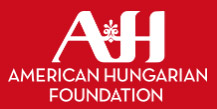The Hungarian Student, 1958 (3. évfolyam, 1-2. szám)
1958-10-01 / 1. szám
with it an explosive rejuvenation of the country’s intellectual spirit, had exceptionally favorable results. For example, it was this general atmosphere which made it possible for the writings of Albert Camus, four years after their publication, to become among the most widely used works in the teaching of French language and literature. It aided in widening the cultural horizon and brought about such things as the publication of Heidegger side by side with Tao te King and the classical works of Eastern philosophers. Youth was surrounded by an effervescent intellectual life. The young, democratic country made great efforts to help students, artists, teachers and scientists to travel to foreign countries, and this contributed a great deal to the fact that “avant-garde” art and literature were well-known and almost unanimously accepted by the youth within two years. It was in this period that the present generation became part of the tissue of Europe’s cultural life. Soon after, youth was torn away from this tissue and today, released from its enforced hibernation, it is once again trying to fit into a living but altered reality. Before we explore this new reality, we shall discuss that forced separation, which was the second and tragic change in Hungary’s cultural life. In 1948 the Communist Party completely took over Hungary’s government. Henceforth only a State-supervised culture and art could exist. The Russians took over the Hungarian government during a violently Stalinist period, and this greatly aggravated the situation, causing far-reaching distortions in the structure and organization of Hungarian intellectual life. Private cultural enterprises were discontinued by State order: there was to be no further publication of books by independent publishers, and no privately-owned theatres, movies or art galleries were any longer to exist. All cultural outlets became government monopolies, and these monopolies enabled the government to put an end to the cultural process of the previous few years. In its place a castrated form of Soviet art appeared. Neither old Soviet films, nor Solochov, nor even Prokofiev were prominent in this period, which borrowed its tools from the strongbox of German policy. A list was prepared containing both “Nazi” works, and “ideologically harmful material,” the latter heading comprising many of the outstanding creations of Western art and literature. Those who had drawn up this list were not only biased and malicious, but also ignorant, and as a result, they included everyone, such as Mereskovsky, for example, who did not fit exactly into the narrow intellectual limits set up by the regime. The books on the list were destroyed. The second phase of the operation was the complete transformation of the schools. University teaching was altered by considerably reducing the French, English and German departments, and making the instruction of Marxist ideology compulsory. In the light of both these changes, the teaching of the modern arts and literature became a parody. Members of the Academies were faced with expulsion if they did not conform to the dictates of socialist realism. In the field of natural science the devastation was even more complete. Heisenberg’s works were forbidden, as were those of Einstein, because of their philosophical theories. The theory of relativity and modern principles of matter would not fit into the framework of Feuerbach’s primitive materialist teachings. The deterioration of the culture was exemplified by the approach to Stalin’s study on linguistics. It was discussed and extolled at special sessions of every satellite country’s academies of science and art. The majority of films were filled with praises of Stalin’s superhuman goodness and wisdom. With the presence of such a figurehead and several minor prophets, the plastic arts had little choice as to subject matter. Portraiture became an important branch of the arts. The strictness of the ideology was also extended to the works of Western Communists. Thus, in these years, Picasso was spoken of as a gifted man who had let his art get into a rut. Books dealing with him were not available to the public for many years, nor were his works. The situation was the same in the case of Eluard, and the names of Apollinaire and Joyce could not be mentioned for a long time. Dealing with Eastern art and philosophy was also essentially dangerous because Party ideologists simply branded it idealistic. Publication of modern Western books ceased. The works of modern composers, including Bartok, could be heard only at home on phonographs. The greatest tragedy of all was that regime ideology was characterized by a strict adherence to principles on the one hand, and on the other by an utter lack of standards. This resulted, for example, in the fact that Tchaikovsky, one of the most bourgeois and, musically speaking, one of the most conservative composers, became the central figure of the regime’s musical world, simply because he was a Russian. This period lasted until Stalin’s death, when a very slow process of reaction to these policies 6 the Hungarian student
